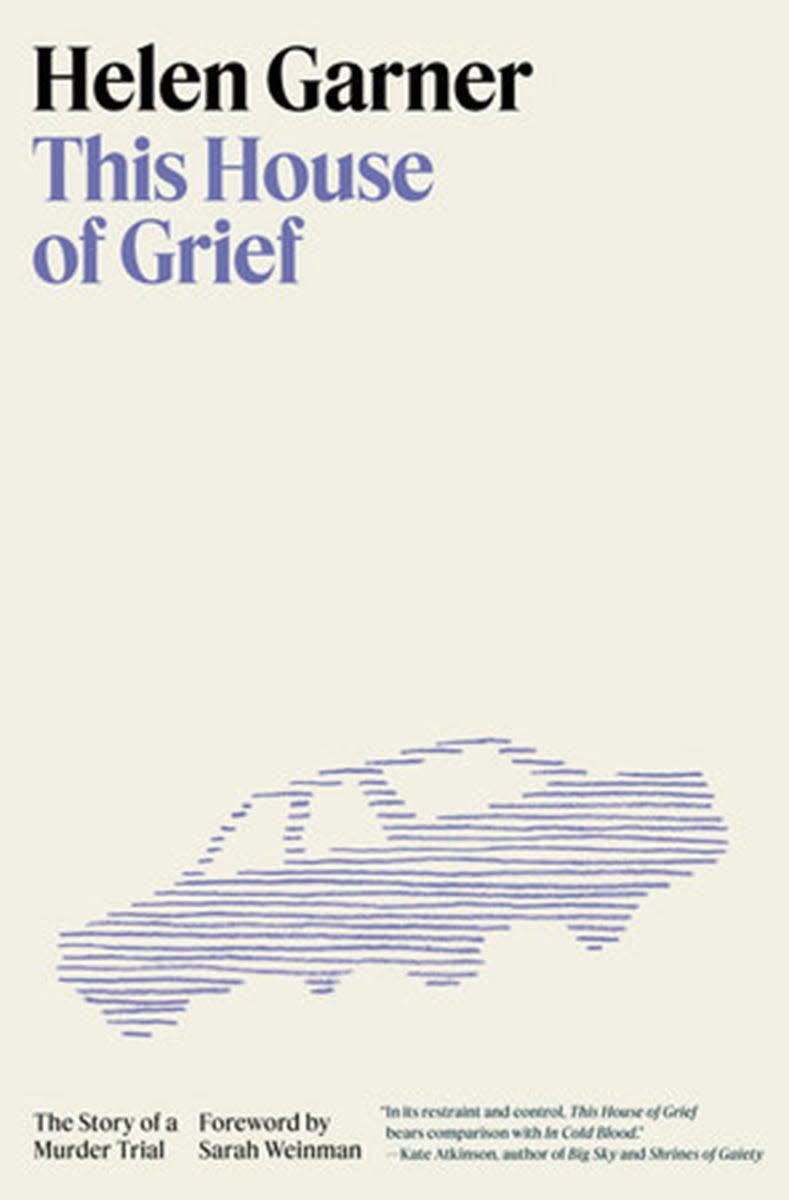Literate Matters: 'House of Grief' reveals how tragedy can be personal and communal
- Oops!Something went wrong.Please try again later.
Perhaps it’s only my limited imagination, or too many episodes of “Dateline,” but the relationship between infidelity and true crime seems as tight as ever.

And in “This House of Grief” Helen Garner, the Australian novelist and journalist, examines an episode that shows how this relationship is as heartbreaking — and as sinister — as it gets.
Indeed at the opening, Garner suggests how the divorce of Robert Farquharson and his wife Cindy, sad as it was, started out much like “a country-and-western song, a rueful tale of love betrayed, a little bit whiny a little bit sweet.”
But on Father’s Day 2005, their story’s familiar outline turned horribly tragic, as Farquharson, returning to the house he once shared with Cindy, the couple’s three young boys with him in the car on a dark highway near their hometown of Winchelsea, Victoria on Australia’s popular Surf Coast, blacked out in a fit of coughing.
Though he insisted ever after to no memory of the moments that followed, his car went off the road, crashed through a stretch of fence, careened over a length of field, then teetered into an inky black farm pond, taking all three boys — Jai, Tyler, and Bailey — to the bottom of the black moat.
He attempted a rescue, if he’s to be believed, before Farquharson soon enough pulled himself from the water, flagged down a passing car, and rode incoherently into town for help. By the time that help raced back to the pond, there was only recovery. A tragedy of nearly biblical proportions.
This of course is the version Farquharson told when questioned by police that night and beyond, right up until and even after he was charged with three counts of murder.

Garner, one of Australia’s most notable writers, bears witness not only to the family tragedy, but also to the national spectacle that came after, amplified by a lengthy trial, appeals and mourning. For seven weeks, she wedged into a seat next to other reporters, recording testimony both distressing — what state were the small bodies in, for example, when eventually pulled up from below — through the scientific — how is it possible, prosecutors and others wondered, that Farquharson’s unsteered auto veered one way when all subsequent testing suggested the road would have pushed it the other way?
Accompanied by a friends’ young daughter Louise, she also observes the many personal turmoils that cloud the story, like when she unexpectedly shares coffee with Cindy’s parents, or leans in close in hopes of insights about Farquharson’s personality from his loyal sisters. Both families labor into their separate seats each day, silently absorbing the body blows of the mundane as well as the monstrous.
Back and forth go Farquharson’s lawyer and the prosecutor, until after “seven weeks of struggle” when “twelve strangers of unknown sympathies and reasoning would take the reins.”
Garner watches the distressed defendant as the jury takes those reins, “courteous and present ... as he might have been in ordinary life.” There is no more ordinary, however.
Herself divorced more than once, Garner grapples to understand both father and mother here, but also pauses to report on how the community, a tight knit berg where it’s expected that everyone knows their neighbor’s business, weighs the range of responses. “‘Whether he did it on purpose or not,’ said an older Christian woman,” we learn, “‘how is he going to atone?’” Still, “Countless men declared in anger and distress that it couldn’t possibly have been an accident; that a loving father would never leave the car and swim away.” From the outset, she recognized, “Everyone had a view.”
And while the verdict was well known before this book’s original Australian publication a decade ago, Garner maintains her ability to change her mind, though her initial view is not deeply disguised.
No, the verdict is not hard to see coming, nor is the tumult that results, and the whole thing seems at times like voyeurism gone bad. Nonetheless, Helen Garner humanely reveals the many ways such a heinous tragedy leaves scars, both personal as well as communal .
Good reading.
This article originally appeared on The Petoskey News-Review: Literate Matters: 'House of Grief' reveals how tragedy can be personal and communal

